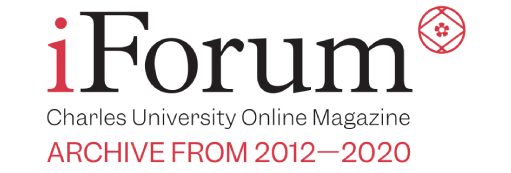Bryonie Carolan • foto: red. • 12 November 2012
“Ebru Art” - Painting on Water
As part of the Europe Meets School program, Kübra Asik, a Turkish born artist and Erasmus student at Faculty of Arts of Charles University in summer semester 2011/12, visited the Olešská Basic Art School in Prague to demonstrate her unique art of painting on water to a very captive young Czech audience.
The art, called “ebru” in Turkish, may sound straight forward. After all, what more do you need other than paint and water? But following an extensive description of the process Kübra went through to make the colours, the paintbrushes and the time it takes to find all the necessary ingredients, it appeared that the centuries old (it’s not possible to name an exact date) traditional art had more to it than first met the eye.
Kübra began by explaining how she made the water, which was put into a small shallow tank. The water contains pieces of shell that Kübra has to prepare 3 days in advance and continue stirring now and again over this time period. The shell makes the water denser so that the paint can be held together on the surface. The colours of the paint are made from soil and ox bile because this makes the colours stay on for longer. She doesn’t use just any soil however, it is from her home city of Istanbul. The paintbrushes are made from the stem of roses and the brush hairs are made from horsehair. The whole process is very natural.
To demonstrate the art, Kübra painted a flower. Kübra started by shaking a large paintbrush with a colour over the whole tank of water in order to make the background colour. She then chose a smaller paintbrush and carefully touched the surface with a green paint to make a circle of green. She then used another paintbrush to slowly drag the circle and to make a stem. After she chose a bright colour to make another circle at the top of her stem. Finally she dragged a clean paintbrush diagonally inwards on this new circle, this made the petals of the flower. She then placed a clean sheet of paper on to the water tank and gently pressed down on it, then slowly peeled off the paper and presented her artwork. The schoolchildren were very impressed and Kübra was lavished with “oohs” and “ahs”.
Kübra explained that the most classical version of the art is to paint flowers, as it is forbidden in Islamic law to draw faces. The art is a religious practice and so it teaches the art of patience and a calm, balanced mindfulness. The idea is that you are connecting with the water and it is definitely clear that you have to be very gentle and careful when you paint onto the water, in order not to ruin your creation!
A great patience isn’t only needed in the process of actually painting, but Kübra also underwent an intense level of training in order to learn this art. She’s currently in her 8th year of learning but she recalls that her teacher in the beginning made her wait 6 whole months before even letting her paint on water.
Luckily for the young Czech children, Kübra did not make them wait so long. All of the children were given the chance to try painting on water with Kübra’s guidance. They each took it in turns to draw flowers on water and then triumphantly present their creation to the rest of the class.
